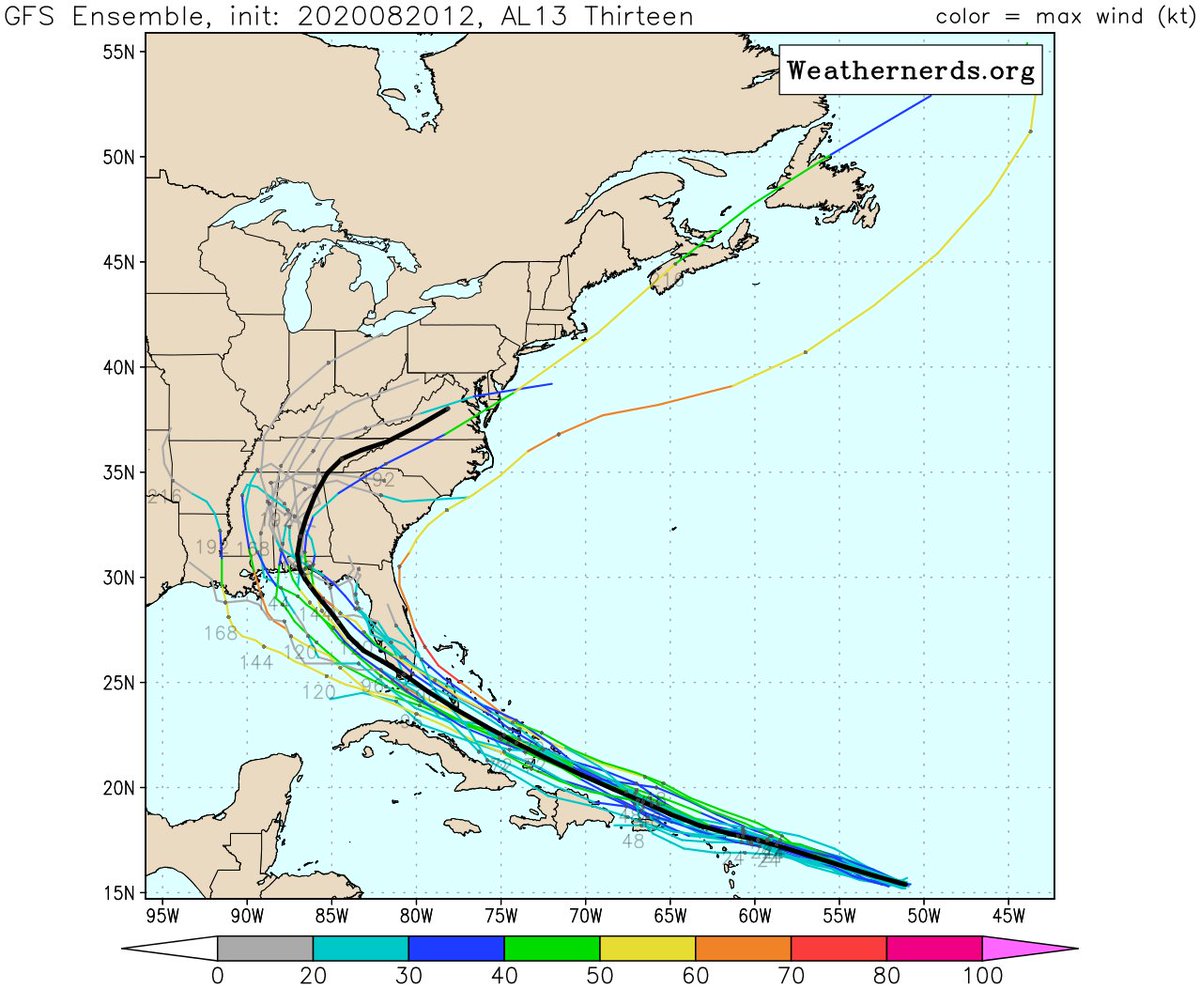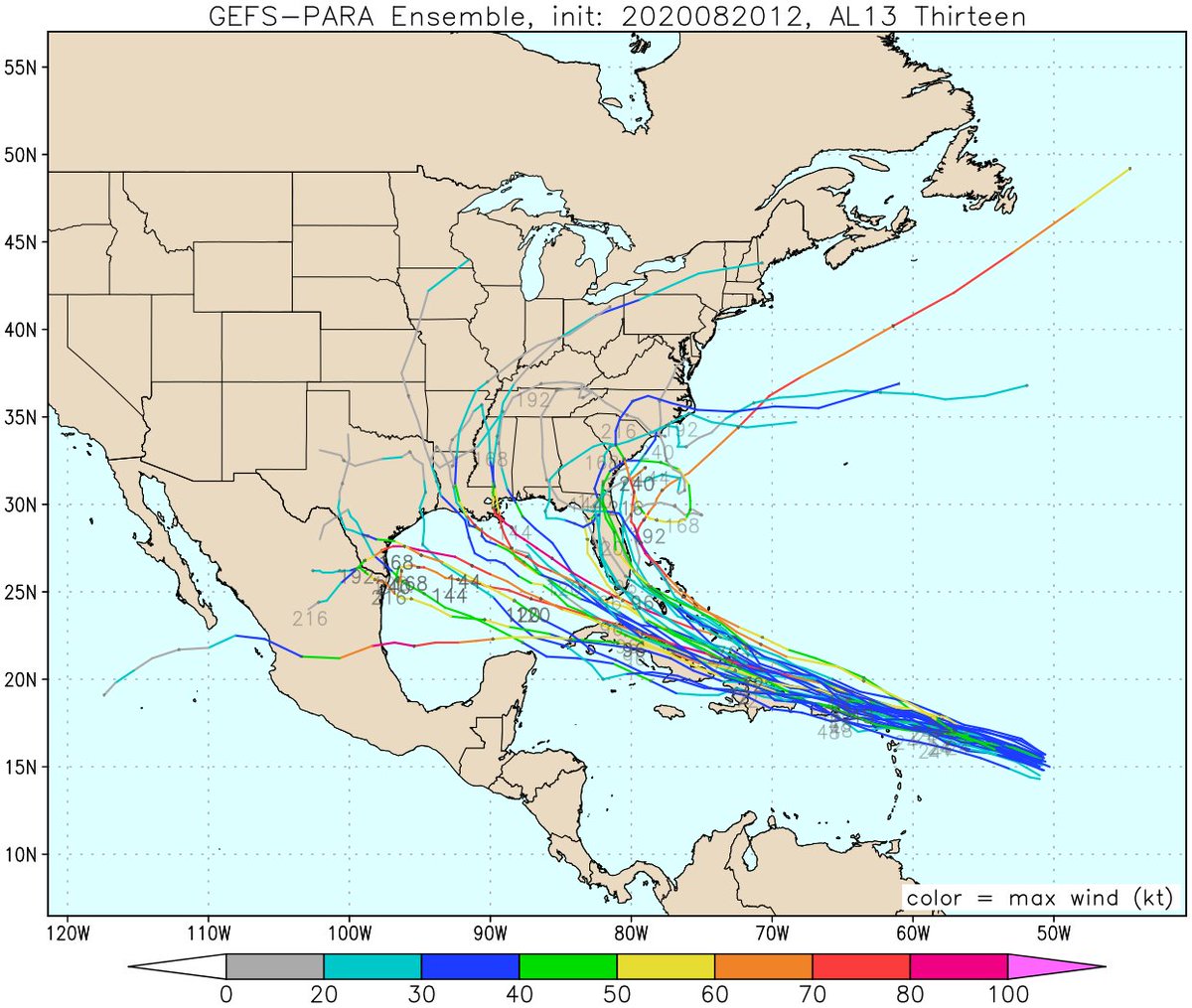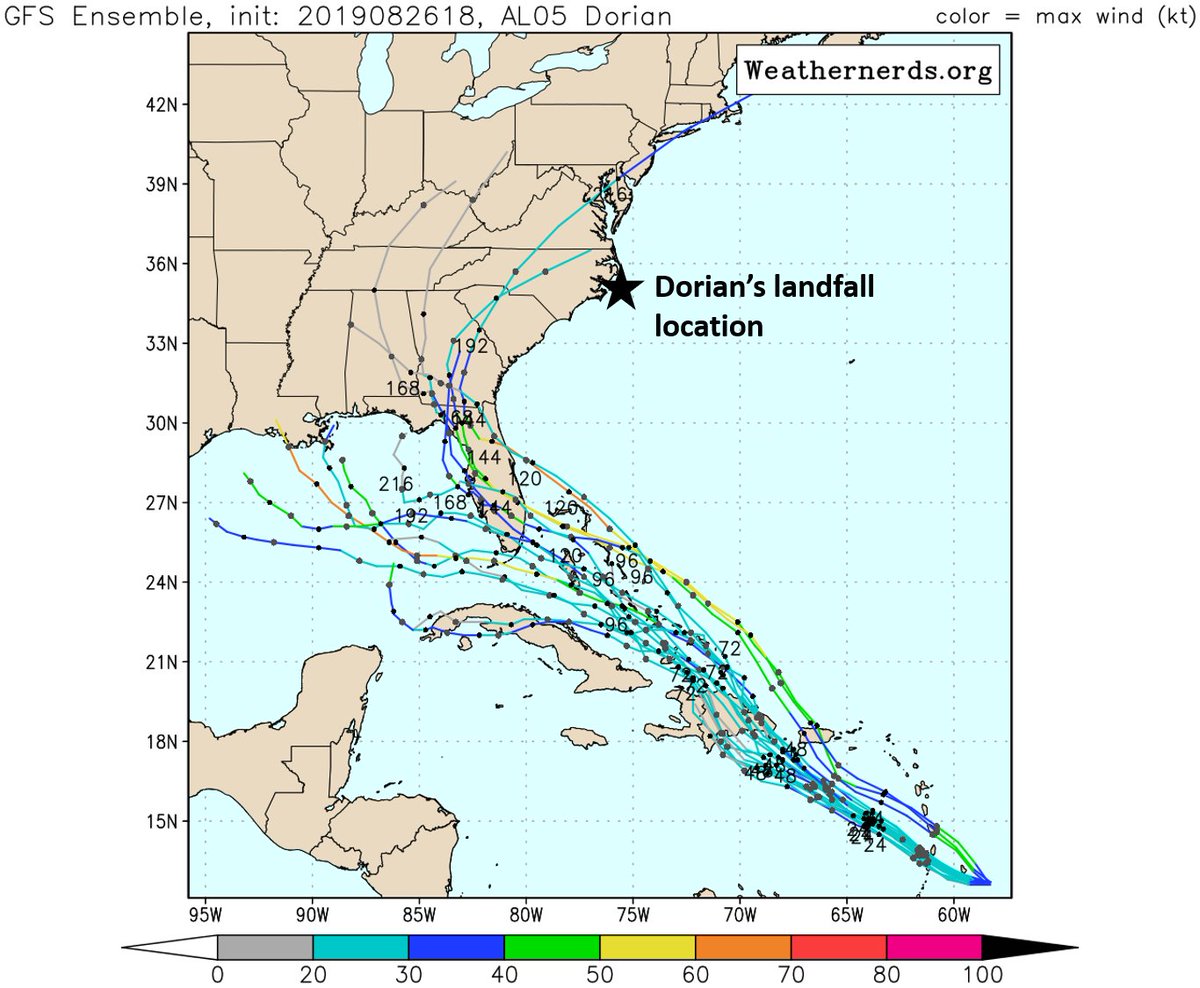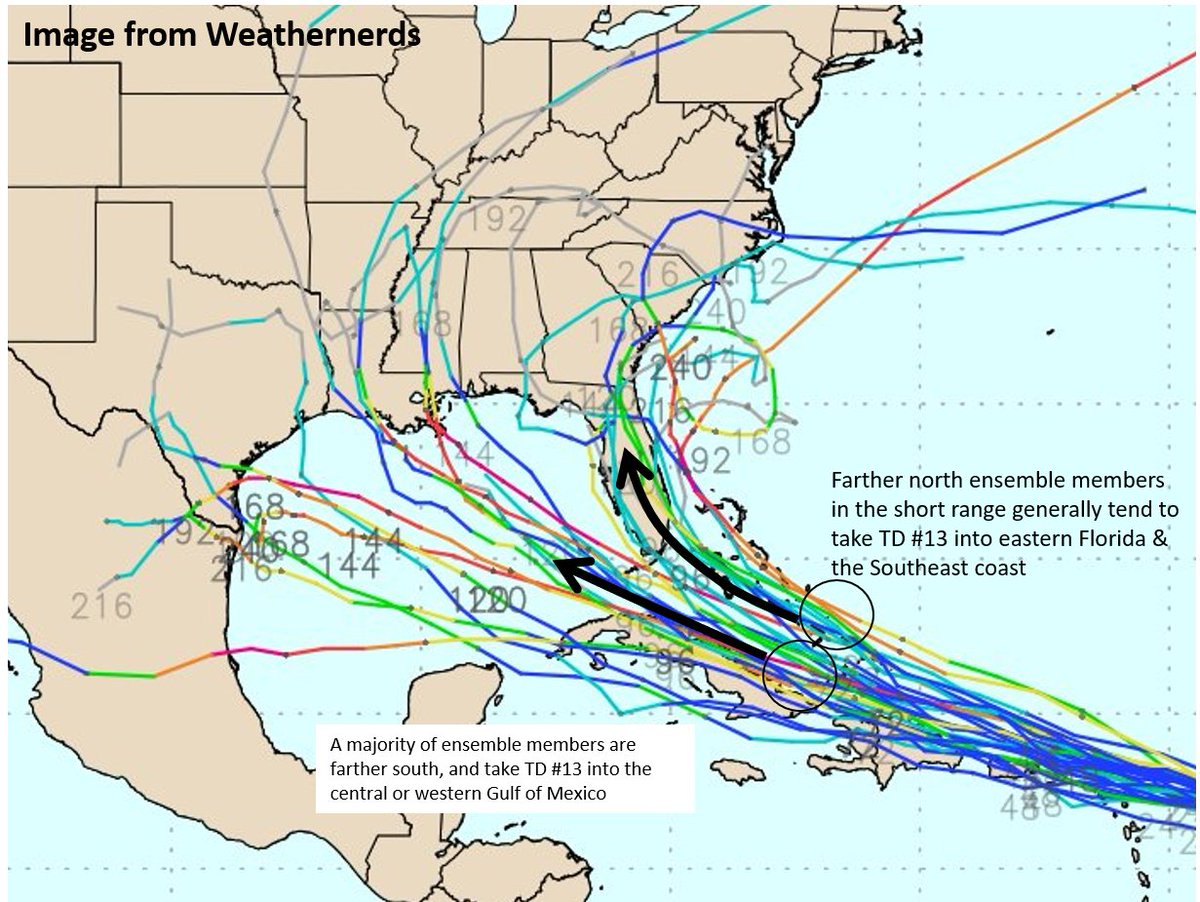1/ Below is a comparison of the two parallel-running GEFS for TD 13:
Left - operational GEFSv11, 21 members
Right - parallel GEFSv12, 31 members (courtesy @Weathernerds)
GEFSv12 show a much larger spread in track & intensity than GEFSv11. But this doesn't mean it's clueless.
Left - operational GEFSv11, 21 members
Right - parallel GEFSv12, 31 members (courtesy @Weathernerds)
GEFSv12 show a much larger spread in track & intensity than GEFSv11. But this doesn't mean it's clueless.
2/ As a quick refresher, ensembles are created by running a model multiple times with slight tweaks, whether to its initial state or forecast tendency, to obtain a range of all realistically possible forecast outcomes. This helps account for uncertainty in the initial state.
3/ Ensembles such as the GEFS can be notoriously underdispersive - which for tropical cyclones, means that the actual position of the storm can often happen outside of the spread of ensemble forecasts, or more simply that ensembles don't always account for all possibilities.
4/ Overly relying on an underdispersive ensemble can make one overly confident on a forecast - if it's consistent & with little differences among ensembles, it must be onto something, right?
Not exactly - take Dorian for example. None of the GEFS members showed it hitting NC.
Not exactly - take Dorian for example. None of the GEFS members showed it hitting NC.
5/ More ensemble members can help to increase ensemble spread - the ECWMF ensemble has 51 members. There's generally a limit at which adding more ensembles doesn't increase forecast skill - not sure about TCs, but for other applications it's ~50 members (Hakim & Torn 2005).

 Read on Twitter
Read on Twitter






